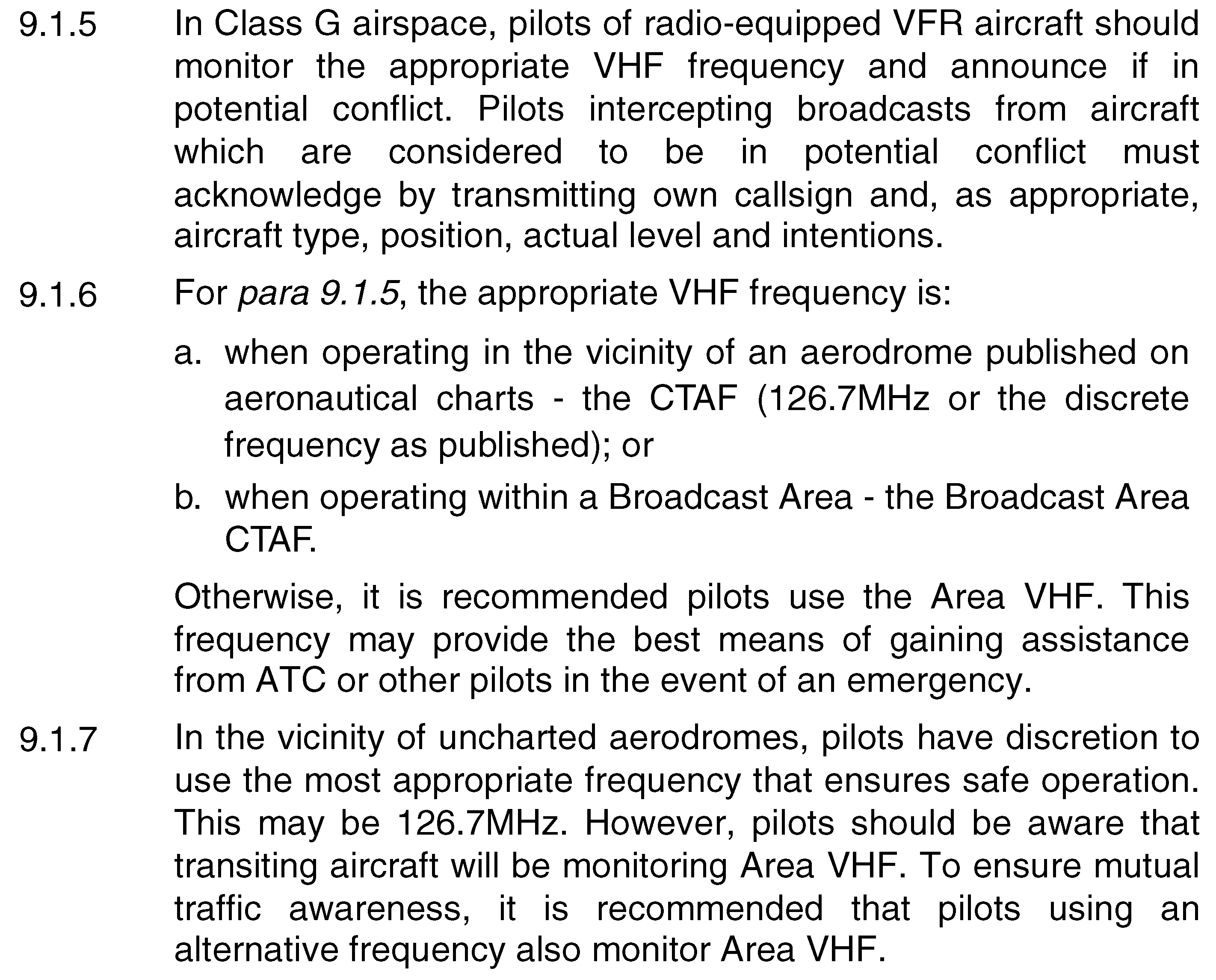As the pilot in command, it’s important to know what frequencies to use when operating near an aerodrome. If you are flying within 10 nautical miles (nm) of an aerodrome, or at a height that could potentially conflict with operations at the aerodrome, you are considered to be “in the vicinity” of the aerodrome. In this case, you should use the designated MULTICOM frequency of 126.7 MHz or the discrete CTAF frequency as published on aeronautical charts.

However, if you are within a Broadcast Area, you should use the dedicated Broadcast Area CTAF frequency. This ensures that you are able to communicate with other pilots and air traffic control (ATC) in the area.
If you are not in the vicinity of an aerodrome or within a Broadcast Area, it is recommended that you use the Area VHF frequency. This frequency can provide the best means of gaining assistance from ATC or other pilots in the event of an emergency.
It’s worth noting that, in the vicinity of uncharted aerodromes, pilots have the discretion to use the frequency that they feel is most appropriate for safe operation. This could be the MULTICOM frequency of 126.7 MHz. However, it’s important to be aware that other transiting aircraft may be monitoring the Area VHF frequency. To ensure mutual traffic awareness, it is recommended that pilots using an alternative frequency also monitor the Area VHF frequency.
The most hazardous area for a collision in the vicinity of an aerodrome is within a cylinder of airspace that is 5 nautical miles in diameter and extends up to 3,000 feet above the aerodrome. By staying informed about the proper frequencies to use and being aware of your surroundings, you can help to ensure the safety of your flight and the flights of others in the area.